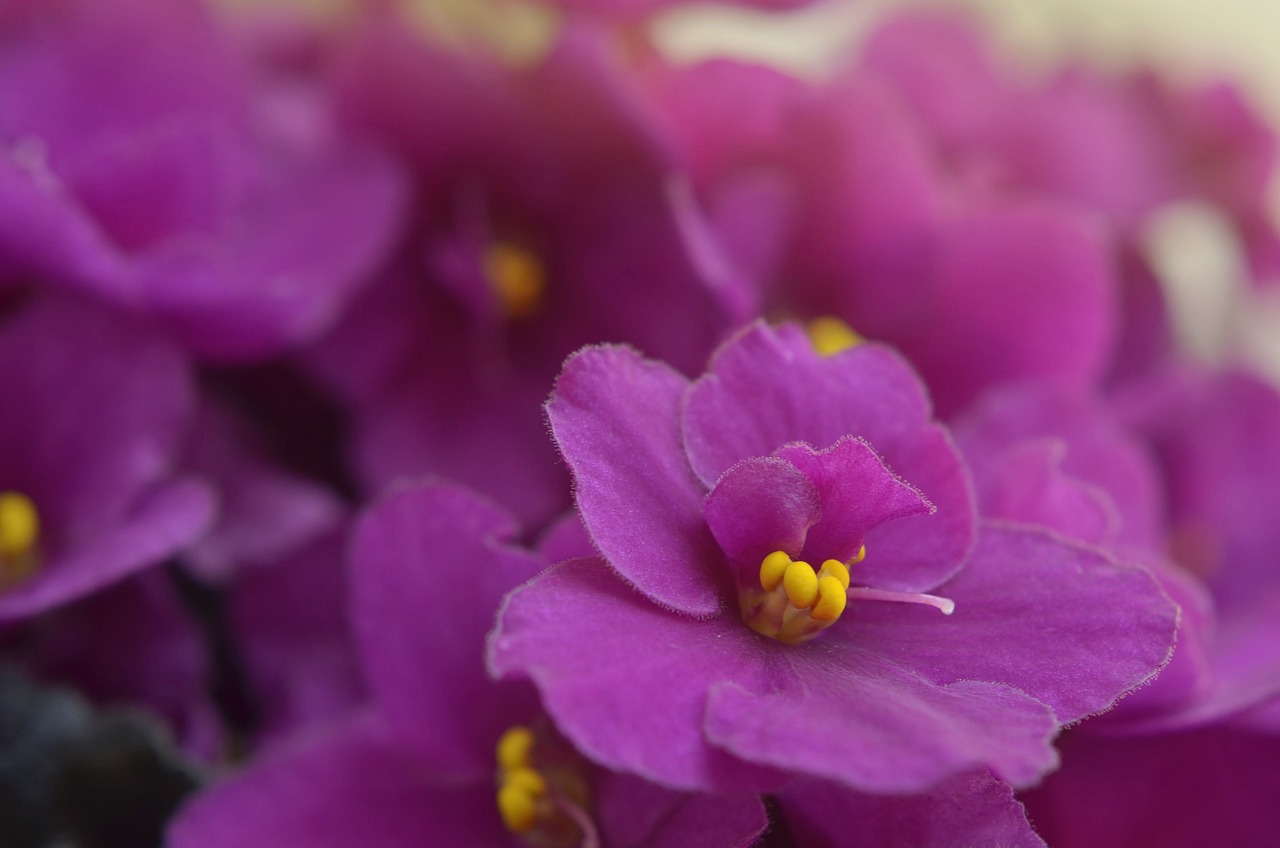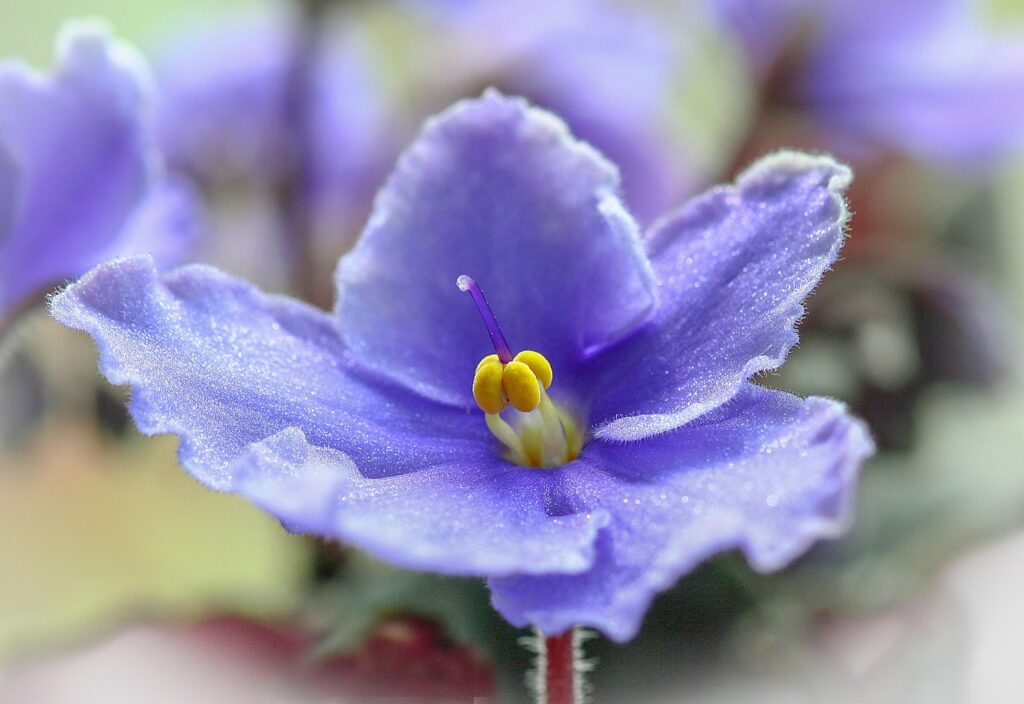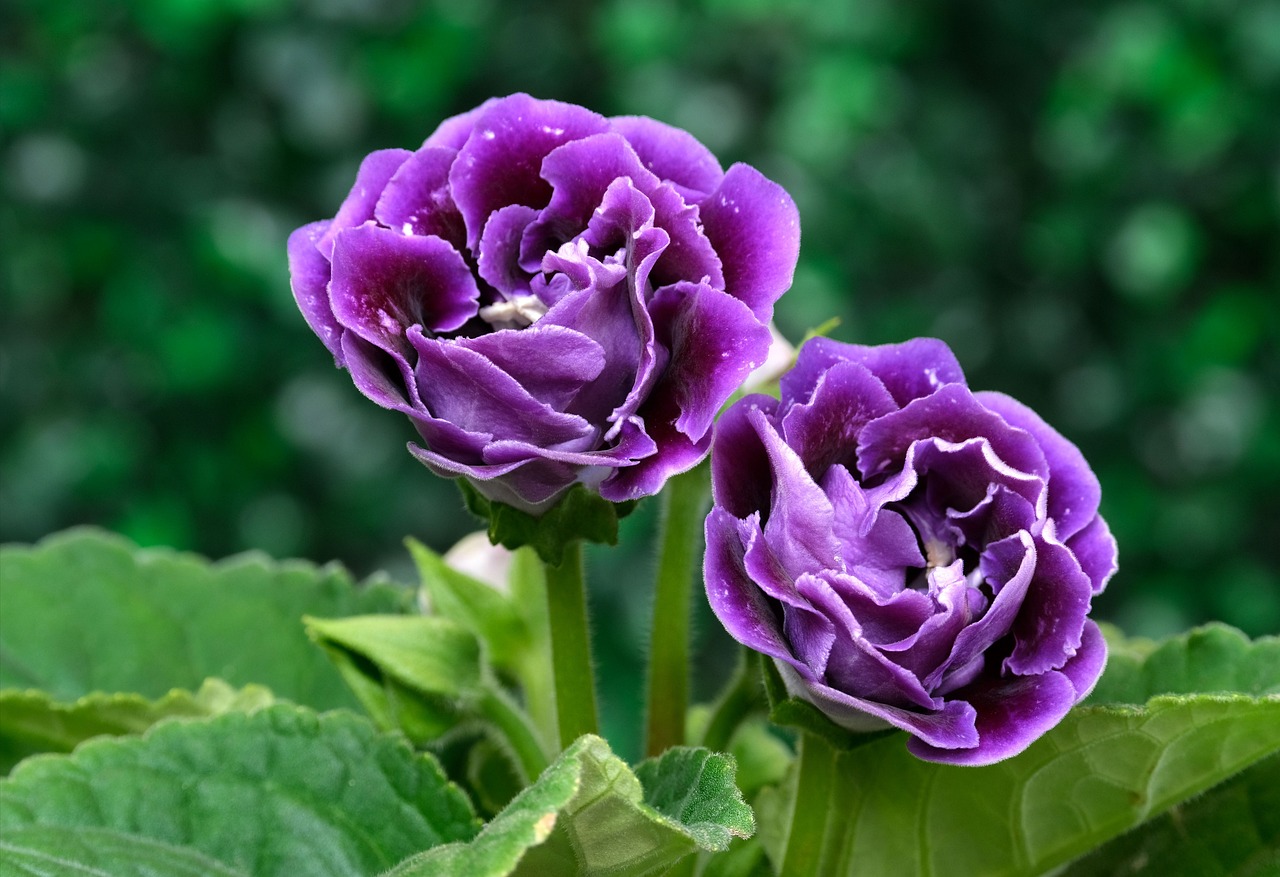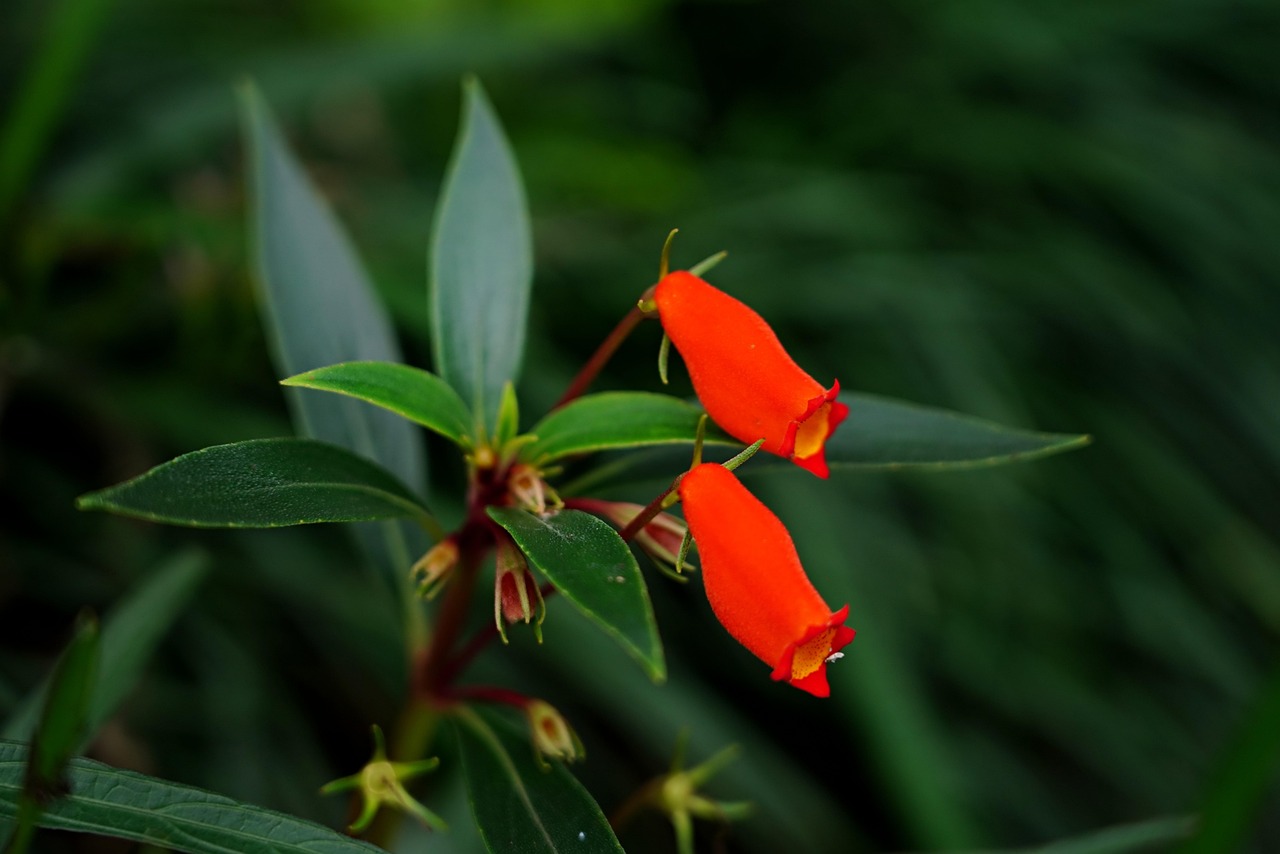Saintpaulia: Features and Care

Saintpaulia is an indoor plant that is easy to grow and offers long-lasting, beautiful flowers. Its compact size and vibrant colors make it a popular choice for home decor.
This article provides detailed information about Saintpaulia, including its characteristics, cultural significance, history, and care tips.
Basic Information
- Scientific Name: Saintpaulia spp.
- Family: Gesneriaceae
- Origin: East Africa (Tanzania, Kenya)
- Appearance: Small, rounded leaves with delicate flowers in shades of blue-violet, pink, and white. The petals have a glossy texture, adding to their refined appearance.
- Blooming Season: With proper care, Saintpaulia can bloom throughout the year.
Cultural Significance Around the World
Saintpaulia is cherished worldwide for its delicate beauty and ease of care. In the United States, its popularity grew significantly in the 20th century, making it a common household plant. With the rise of home gardening, breeders developed numerous varieties, leading to the thousands of cultivars available today.
In Europe, Saintpaulia symbolizes “elegance” and “warmth of home.” It is especially valued in the United Kingdom and France, where it is often placed by windows and used as interior decoration. In Japan, it gained popularity during the Showa era, becoming a favorite among gardening enthusiasts for its suitability to indoor cultivation.
Historical Background

Saintpaulia was discovered in the late 19th century in East Africa (modern-day Tanzania), which was then a German colony. In 1892, Baron Walter von Saint Paul-Illaire encountered the flower and brought its seeds back to Europe, leading to its introduction to the horticultural world. The plant was named after him in recognition of his discovery.
Subsequent breeding efforts in Germany and France refined the plant’s characteristics, making it more suitable for indoor cultivation. By the early 20th century, it had become a popular ornamental plant. In the United States, commercial cultivation began in the 1920s, and by the 1950s, amateur breeders had expanded the range of colors and leaf shapes, increasing its appeal.
Gardening Tips
With proper care, Saintpaulia can bloom continuously. Follow these essential guidelines to ensure healthy growth:
Light
Prefers bright, indirect light. Direct sunlight can cause leaf burn, so placing it near a window with sheer curtains is ideal.
Watering
Water when the soil surface feels dry. Avoid wetting the leaves and flowers, as moisture can cause damage. Bottom-watering or watering directly at the base is recommended.
Soil
Needs well-draining, aerated soil. Mixing potting soil with perlite or vermiculite improves root health.
Fertilizer
Apply diluted liquid fertilizer every two weeks during the growing season to promote flowering. Over-fertilization can harm the roots.
Humidity
Moderate humidity is essential. If the air is too dry, place a shallow dish of water near the plant or use a humidifier.
Temperature
Thrives in warm conditions, ideally between 15–25°C. Protect from cold drafts and direct airflow from heating or cooling systems.
Conclusion
Saintpaulia is a charming ornamental plant that has been loved worldwide. It became a household favorite in the United States during the 20th century and is regarded in Europe as a symbol of elegance. Discovered in East Africa in the late 19th century, it was later cultivated and refined in Germany and France.
With proper care, Saintpaulia can bloom year-round, making it a delightful addition to any living space. Its beauty and versatility make it a perfect choice for home gardening and decoration.


